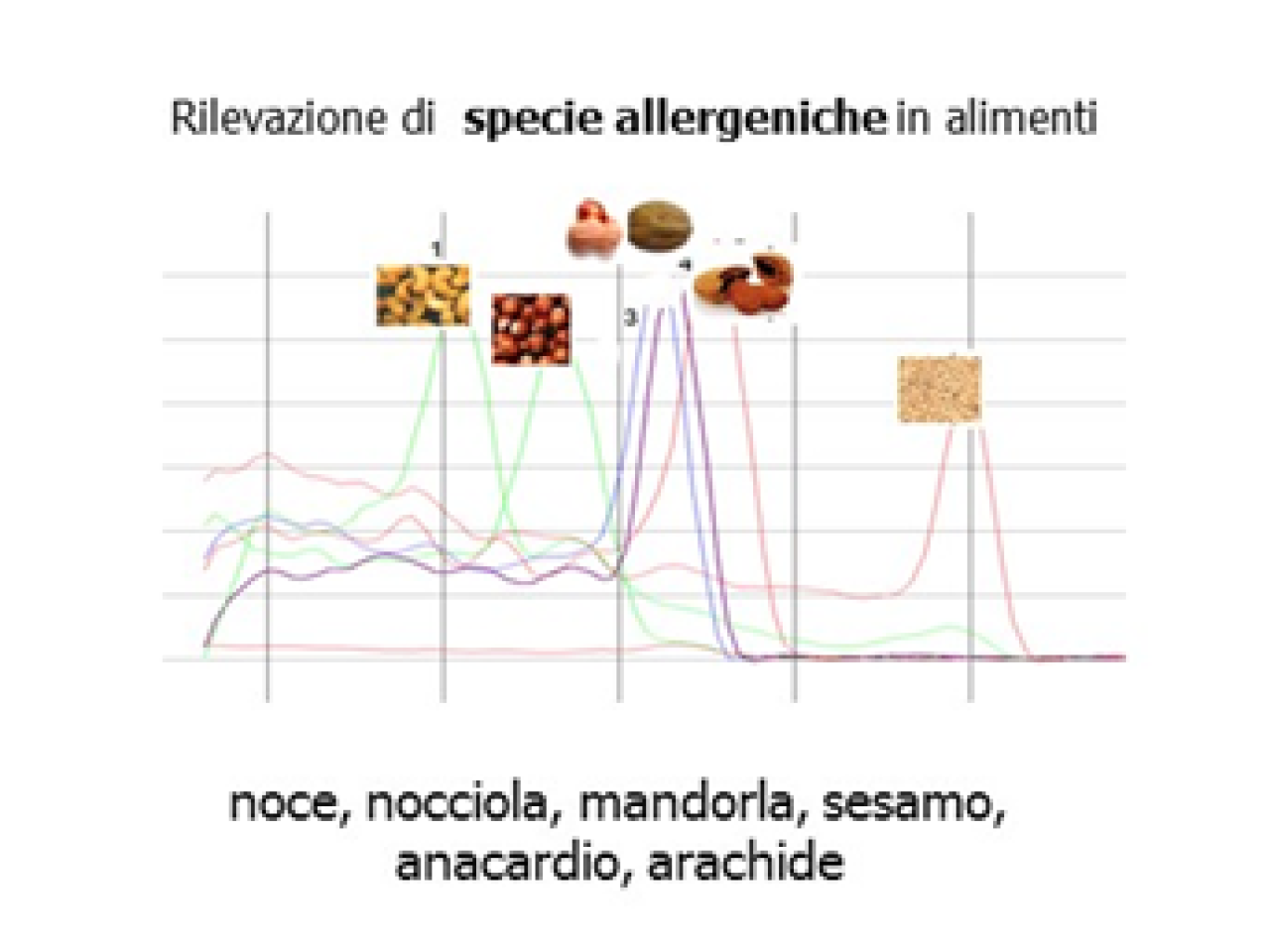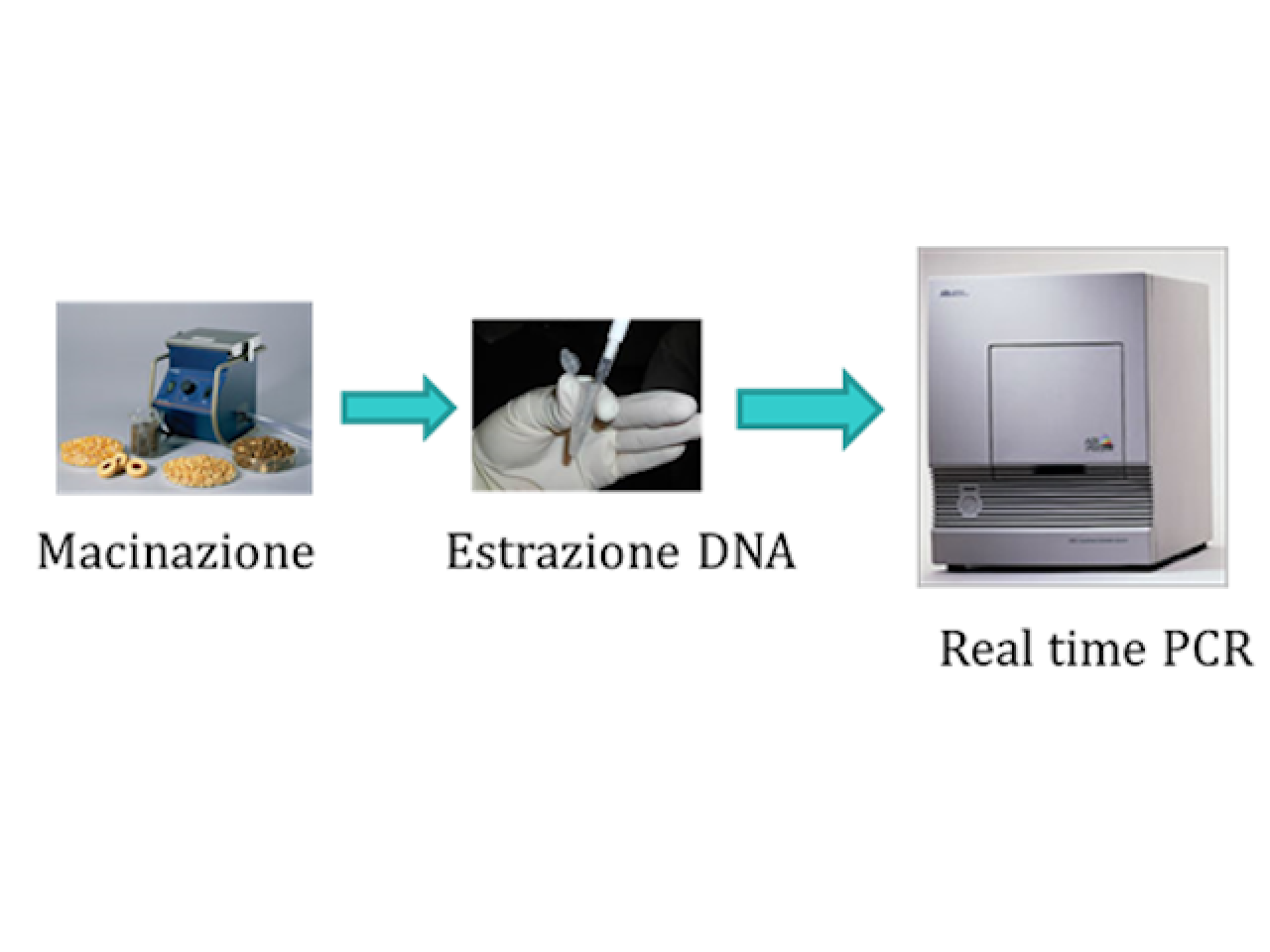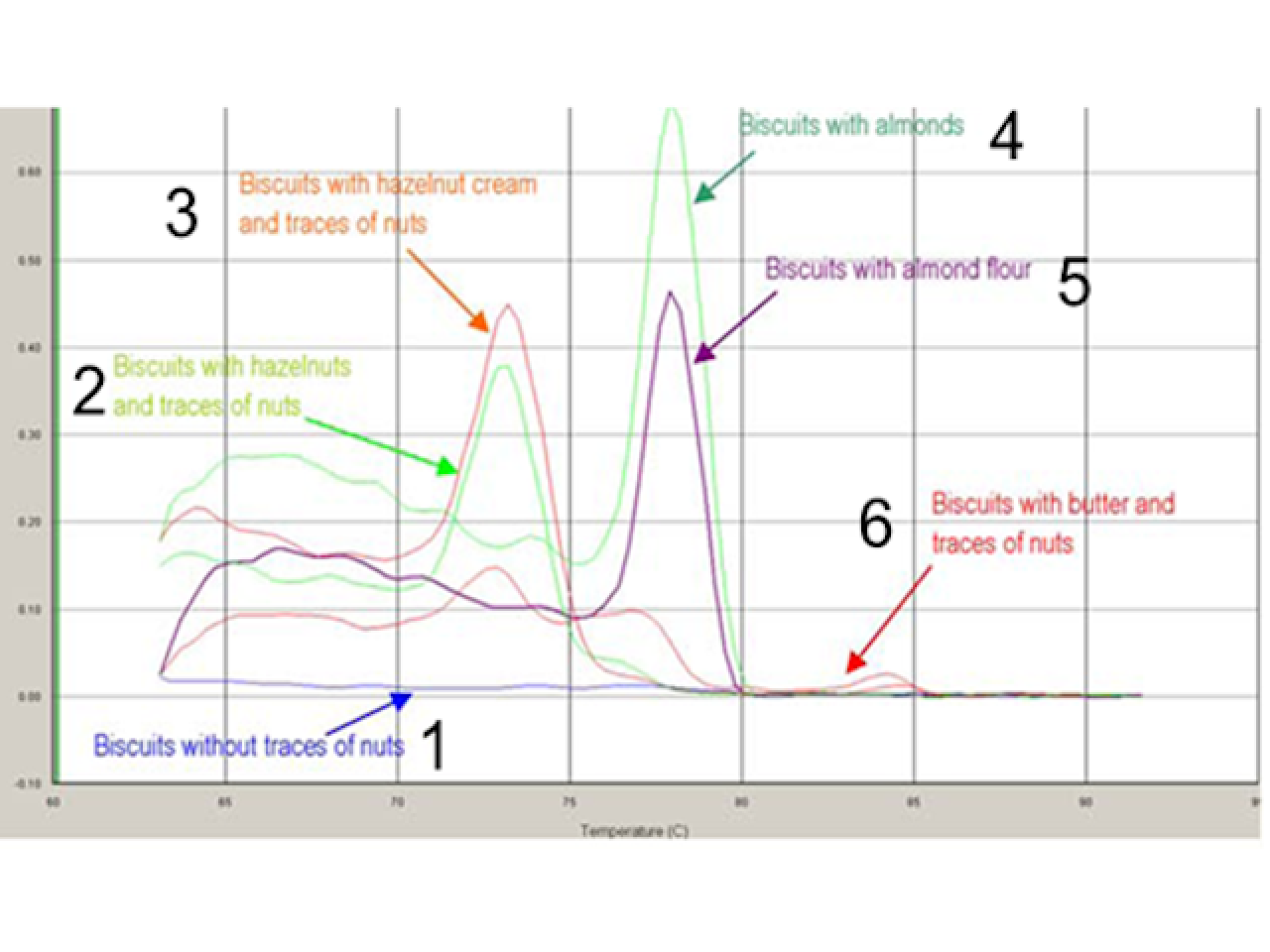The method developed allows for the detection of allergenic ingredients in food, through an indirect DNA-based analysis. In particular, we refer to the ingredients listed in Annex III of the EU Directive 1169/2011. The method is based on the amplification by Polymerase Chain Reaction (PCR) of the DNA purified from food samples, with the aim to detect possible contamination with allergenic ingredients, such as nuts (almond, hazelnut, cashew, peanut, walnut), sesame, celery, cereals with gluten, molluscs (mussels, clams, squid, cuttlefish).
 Example of baked food analysis by multiplex PCR
Example of baked food analysis by multiplex PCR
For the analysis of allergens in food the available methods are based either on protein detection or on DNA detection which are specific for a single allergen or allergenic species. With the method here described we can achieve a great improvement, with lower costs for a single reaction. Using protein based methods, it is possible to obtain some false negative results, especially if the food matrices are complex and highly processed. The methods based on DNA analysis by PCR are usually very sensitive, since DNA is a molecule more stable than proteins during food production processes.
Food industry, food retailers, specialised companies and large retailers, which usually check their products in advance, in order to avoid recalls; food agency and authorities; National food agency, national healthcare system; packaging industry; cleaning equipment manufacturers and suppliers
 Steps of the proposed method
Steps of the proposed method
Detection of nuts species in baked goods
Development of DNA purification method from different baked goods. Real Time PCR analysis with specific primers for the identification of allergenic species, also in traces. The Real Time PCR results allowed to identify the species present as ingredients but also allergenic species in traces, according to label.
Industry involved in production of diagnostic and analytic tools
Two patents registered, two industries and end user from the University of Parma as customers.
 Analysis of baked foods
Analysis of baked foods

